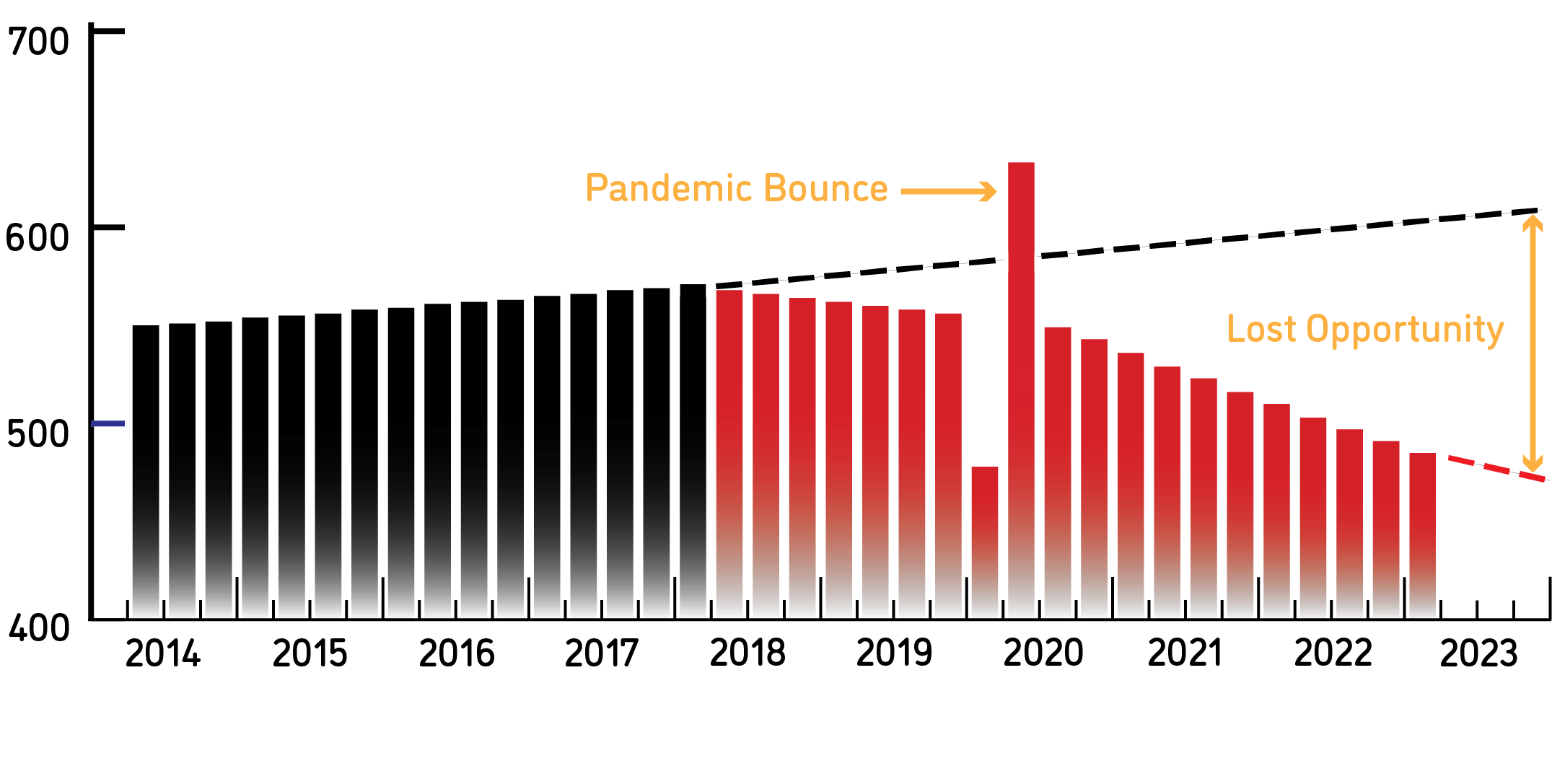Tim Krogstad takes great pride in his role as CEO of ROCK Metal Manufacturing–having successfully assumed the position following his father’s passing. He has garnered the respect of the leadership team, customers, and the Board, as well as the admiration of his family (mother, brother, and sister).
Under his leadership, the company navigated the challenges of the pandemic, emerging relatively unscathed thanks to their ownership of the business, buildings, equipment, and minimal debt. However, post-pandemic the business has not fully rebounded, with revenues starting to decline quarter over quarter. The consensus from his leadership team attributes this downturn to quality issues resulting from outdated equipment and its deferred maintenance. Tim believes that in the long term, the market is shifting toward high-performance plastics as a replacement for their metal products in all but specialized situations.
His leadership team remains skeptical of high-performance plastics’ potential long-term threat to ROCK. Instead, they believe that if they improve quality, existing customers will increase order sizes, and the Sales Group can find new customers. It’s more a stay the course mindset, and even though Tim has made several attempts to steer the team toward exploring the creation of a high-performance plastics division, his efforts have been met with limited success.

Tim’s perception is the leadership team is taking their cues from David, the head of manufacturing, and not from him. This situation has led Tim to question his ability to effectively lead the organization and implement the necessary strategic changes.

With revenues projected to decline, Tim is eager to act fast while ROCK remains in a strong financial position.
Tim is also aware of a tacit pressure from his family members to increase dividends. As Tim’s nieces and nephews enter adulthood, the next 5 years will see significantly higher pressure to get value out of the business from his siblings. Perhaps even a push to monetize the value of ROCK– ‘before it falls too much’.
Having attended high-performance plastics conferences, Tim is convinced of their suitability and threat as metal replacements–they offer more design flexibility, and the market for these products is rapidly growing. He presented his findings to the Board, which expressed general support for his proposal to establish a high-performance plastics division. The Board suggested hiring a tier-one consultant to assist in developing a plan.
Tim fears the consultant approach may yield little tangible progress because he believes his leadership team will not guide the consultant as constructively as they should, resulting in a report with weaknesses that the team will then use to demonstrate that the idea of a high-performance plastics business for ROCK is not a good one.

Tim is a member of a valued CEO Network. The events were well-attended, featured interesting speakers, provided some coaching, and occasionally he got interesting ideas, but for Tim, they fell short. Missing was the vested interest and depth of the pier group digging into his challenges and helping him uncover solutions. And now he needs this more than ever.
Expressing his frustration with Jane, another CEO from his network, Tim was surprised to learn he was not alone. She too had struggled. Jane agreed with Tim’s assessment that it could be problematic to hire a typical consulting firm given the current situation with the team and his head of manufacturing. However, she also shared that the depth of the analysis Tim needed was not something that the CEO networks were structured to provide.
Jane shared that she was using LEAP Strategy Partners for situations like Tim’s. LEAP brought the benefits of a consulting process, an understanding of being a CEO born from experience, and they gave her access to a curated panel of former CEOs.
She explained that LEAP operate as an independent, unbiased sounding board, and had given her new perspectives, helping Jane broaden her thinking around an issue, helping her create new ideas.
At the end of the project, they prepared a written report that Jane was able to share with her Board. The Board had been impressed at the detail in the report and that it wasn’t just a typical summary deck, but instead told the full story, there was even a discussion of different points of view by the CEOs on the advisory panel — a dissenting opinion so to speak.
Intrigued by this new approach, Tim seeks an introduction to LEAP Strategy Partners to learn more about the panel of former CEOs and how they might benefit ROCK.
Tim met with LEAP’s Execution Partner, who explained the process, and outlined how the best panels are built by deconstructing the experience of every LEAP Advisory Partner and mapping those to the client’s needs. LEAP had built a proprietary tool – PanelBuilder to facilitate this process. Tim was impressed with the Advisory Panel approach and discussed the challenges he was facing.
After a week, they met again at Tim’s office, but this time with one of the former CEOs acting as the Lead Advisory Partner for Tim and they dug into the problem deeper.
© 2025 LEAP Strategy Partners. All Rights Reserved